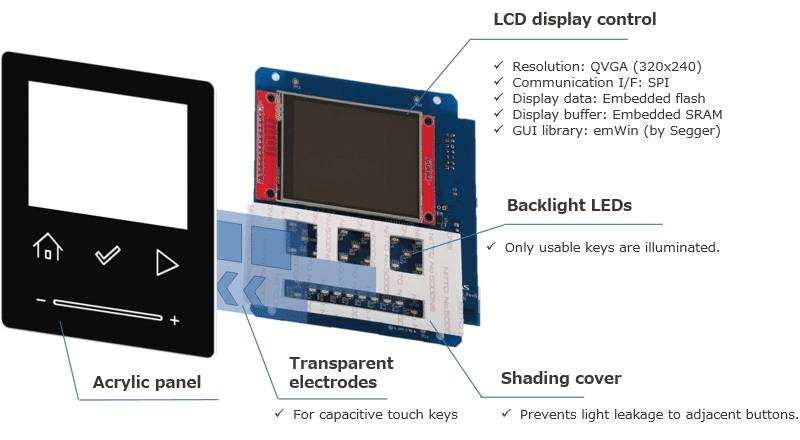Interfaces with touch controls and displays, engineered for rigorous environments, provide efficiency and adaptability.

Serial LCDs with touch capabilities have revolutionised how we interact with technology, offering an intuitive and versatile interface vital for countless applications. Their compact and integrated design saves valuable space and simplifies the development process, making them a cornerstone in both hobbyist and industrial electronics. These displays provide a cost-effective solution for interactive systems, allowing for dynamic user interfaces and immediate feedback that enhances the user experience. With the ability to customise and adapt to various needs, serial LCD touchscreens have become indispensable in advancing accessible and user-friendly electronic devices.
Renesas’s Serial LCD + Touch reference design presents a user interface reminiscent of a microwave oven on a QVGA LCD module, seamlessly connected to an RX Family MCU via SPI. This design incorporates capacitive touch buttons and a slider composed of transparent electrodes. These elements are designed to glow white against the black enclosure when backlit by LEDs, providing a stark, visually appealing contrast.
Developers aiming to customise their projects with particular display capabilities and functionalities can choose between two specialised versions of this design. The RX671 variant can display 16-bit colour, making it a perfect fit for systems needing Real-Time Operating Systems (RTOS) or cloud connectivity support. On the other hand, the RX140 model offers a more straightforward 4-bit grayscale display, targeting projects prioritising low power consumption and cost-effectiveness. These options allow developers to select the most appropriate solution for their application needs.
The Graphical User Interface (GUI) solution that utilises the Serial Peripheral Interface (SPI) offers an economical alternative, especially well-suited for applications with low-resolution displays. This streamlined approach allows LCDs to be managed effectively using merely four pins designated for the SPI interface. Developers can access sample programs that enable the evaluation of both an external LCD module and the functionality of touch sensors on a singular chip. Additionally, RX MCU users can benefit from a complimentary and lightweight GUI library offered by a partner, enhancing the development experience without incurring extra costs.
Renesas have tested this reference design. It comes with a Bill of Material BOM, schematics, etc. You can find additional data about the reference design on the company’s website. To read more about this reference design, click here.






